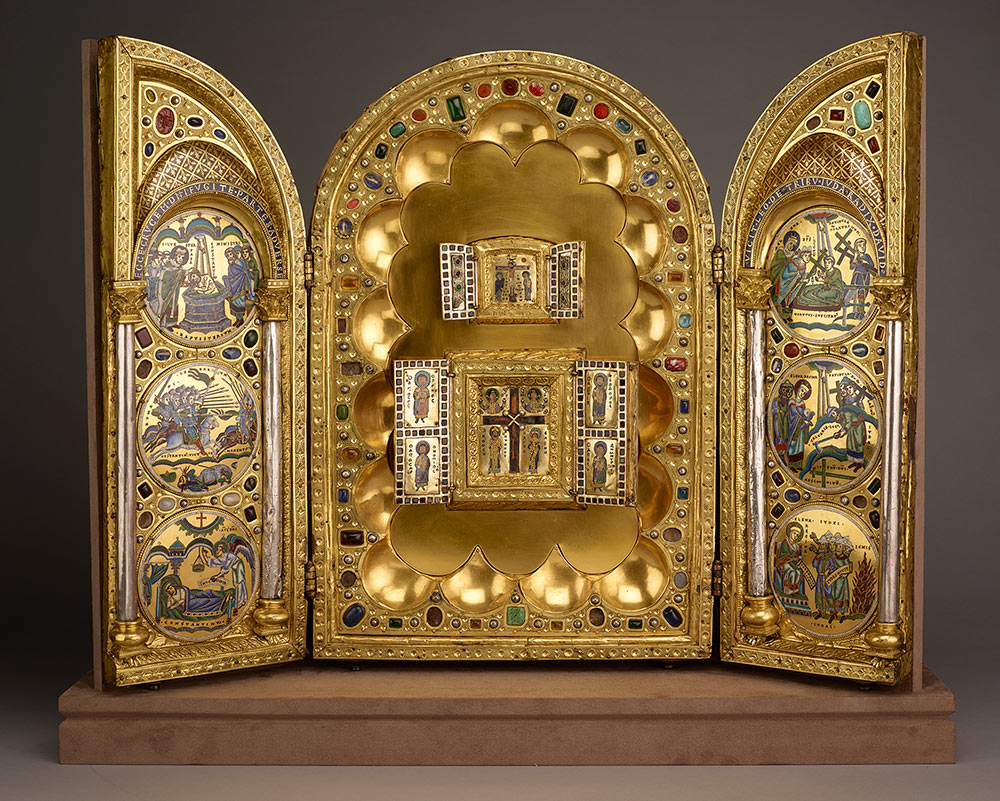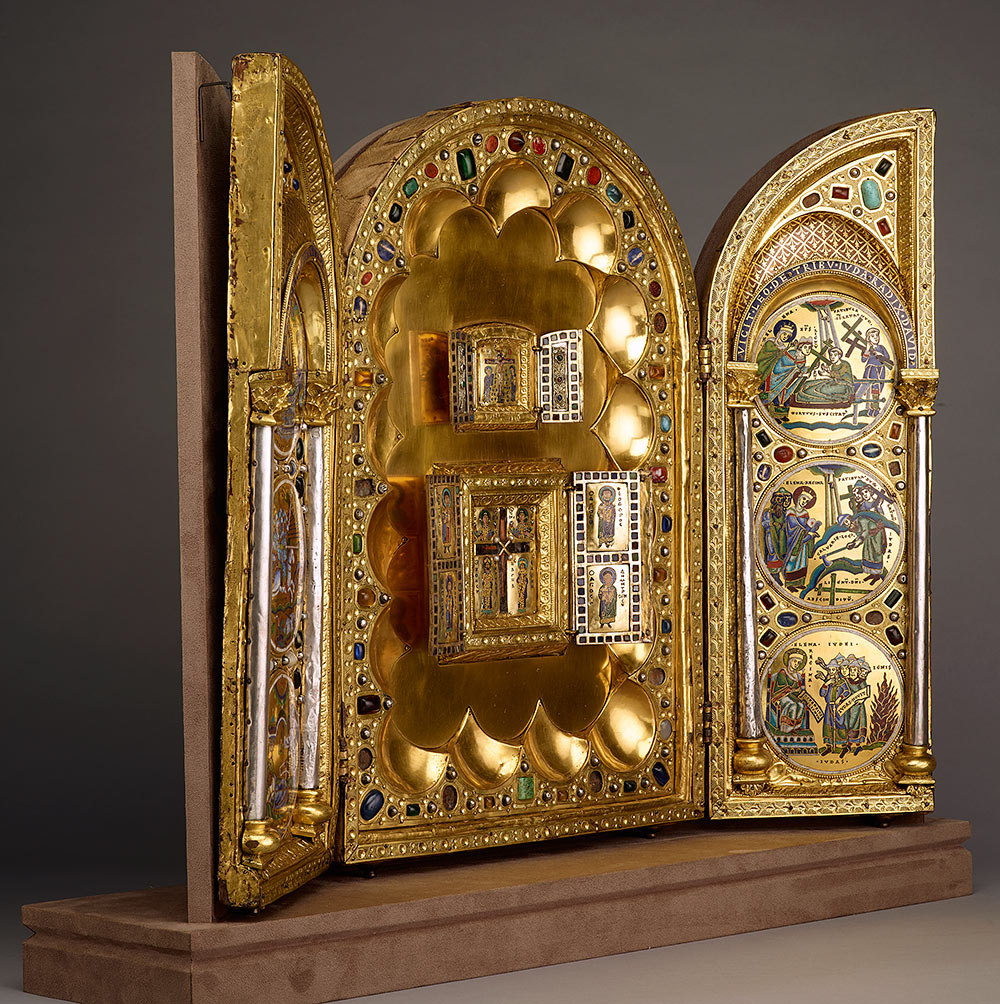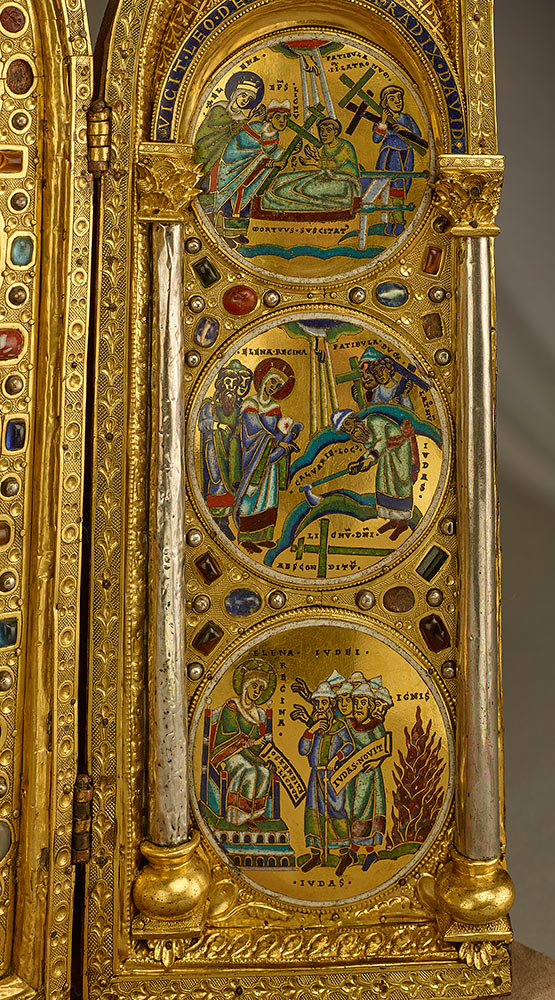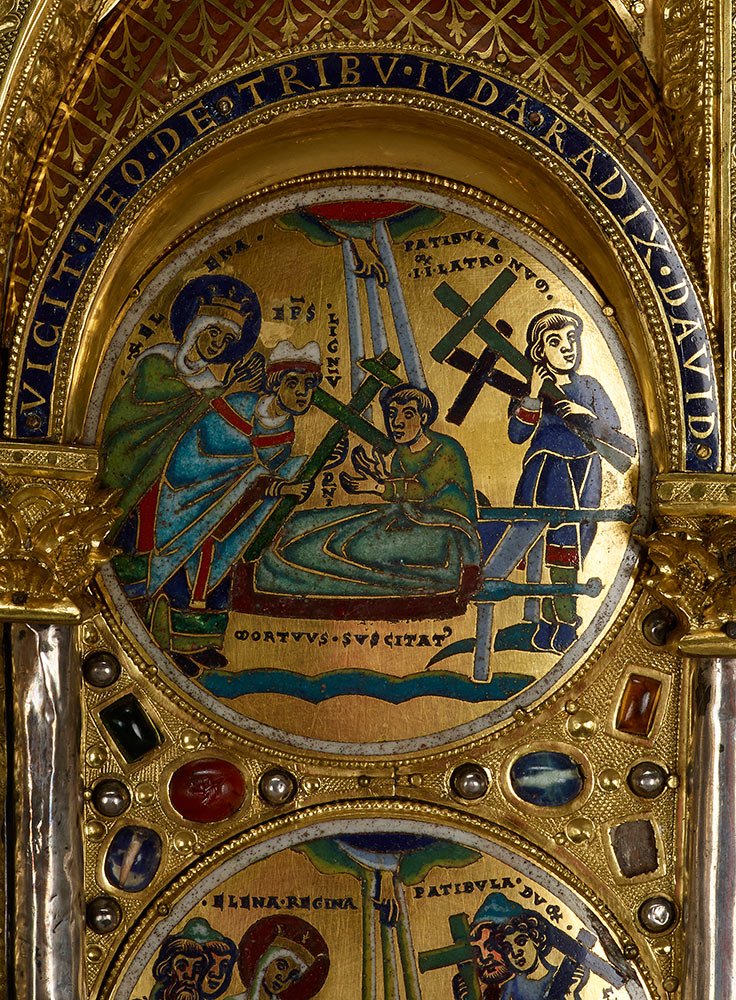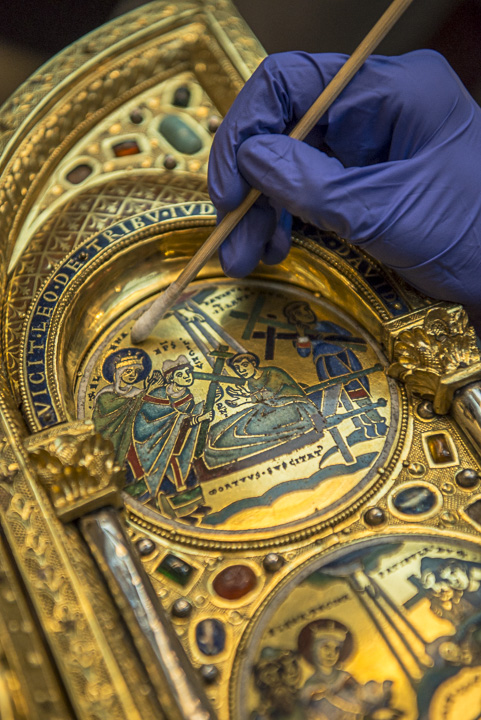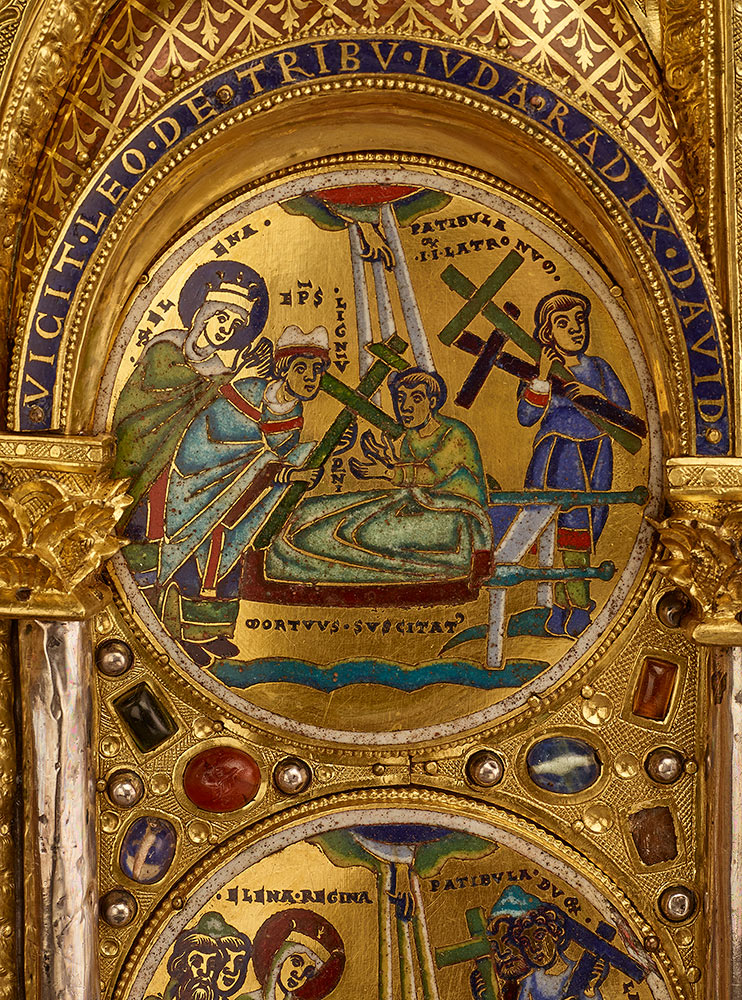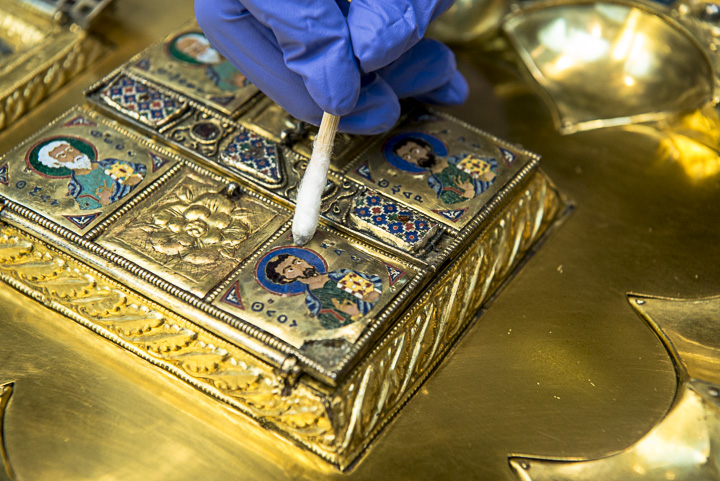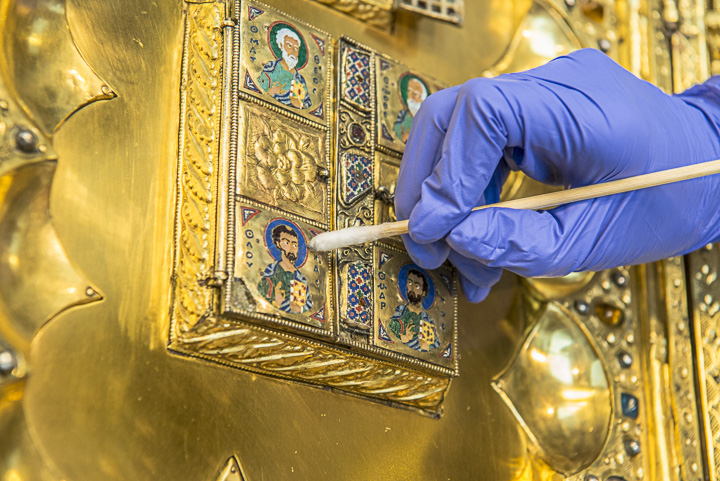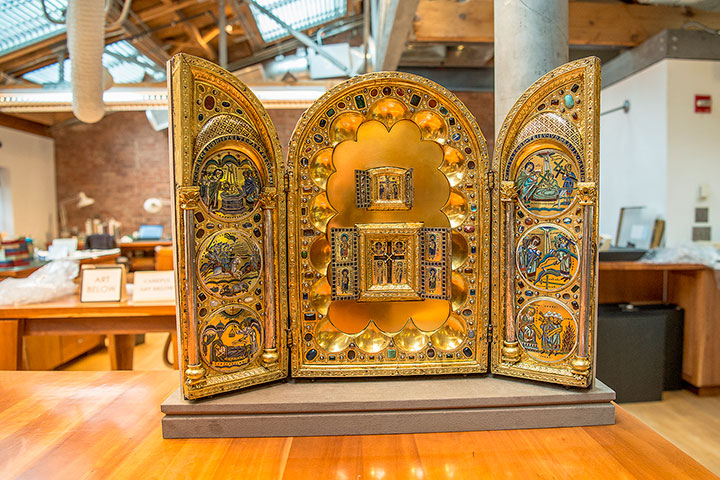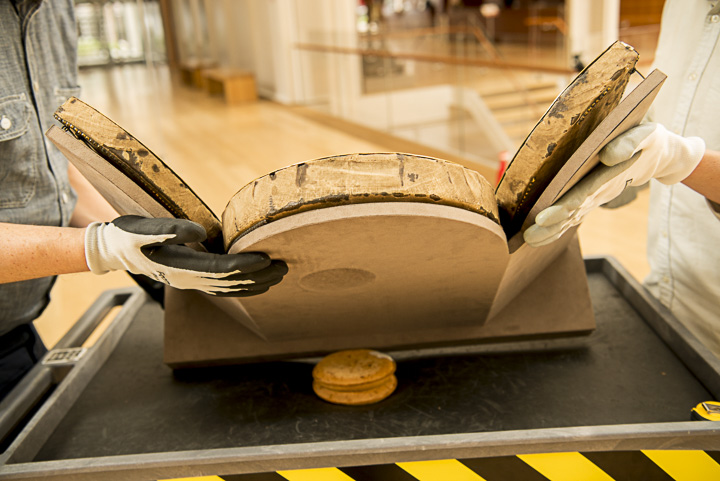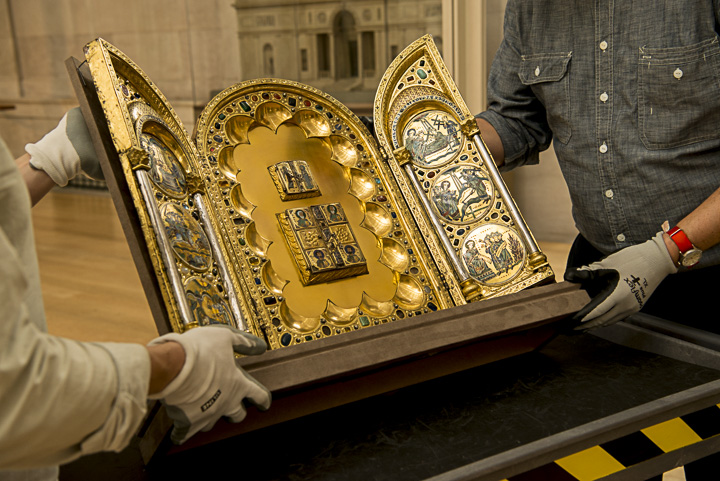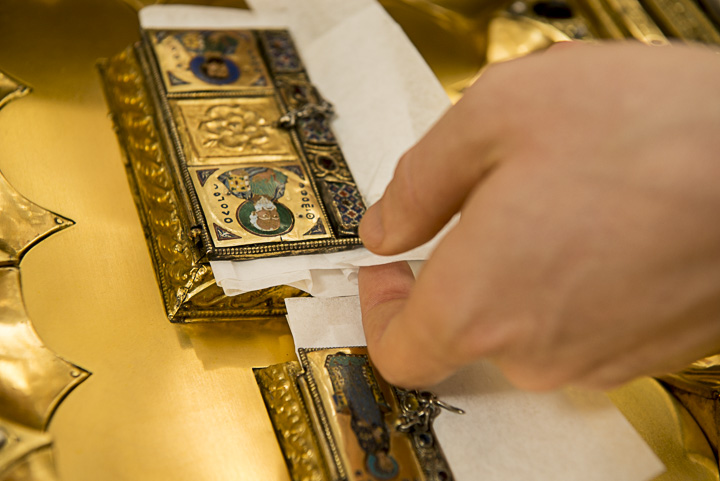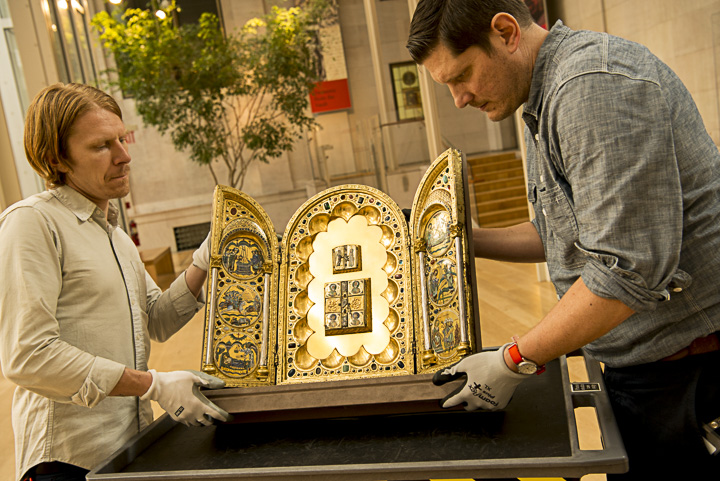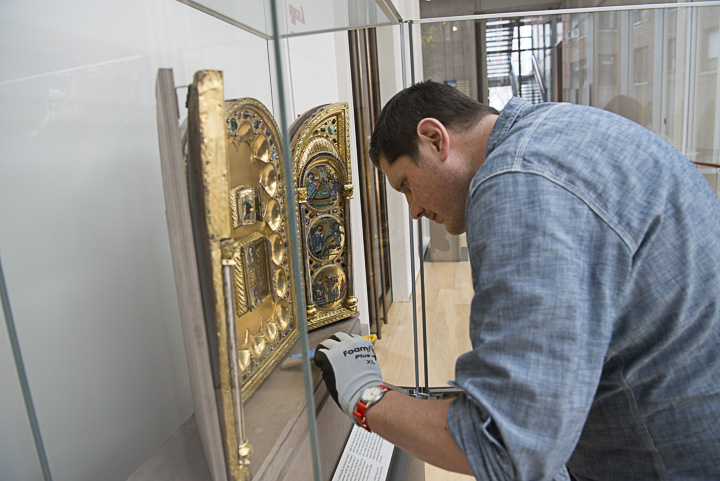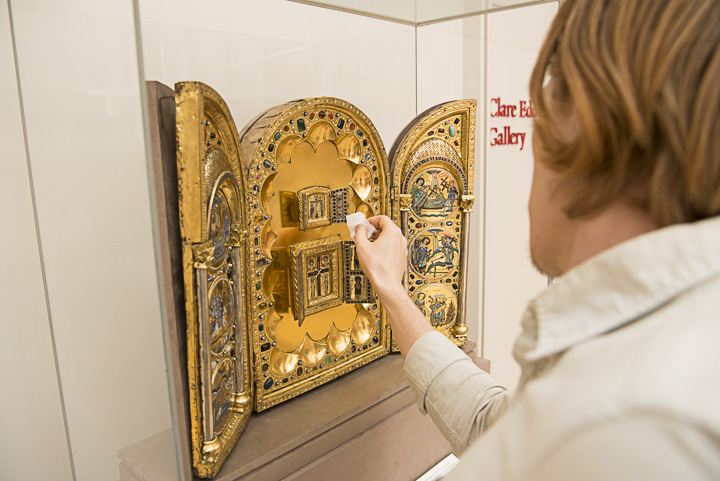It's extra bright in Gilbert Court now that the Morgan's extraordinary Stavelot Triptych is back on display.
The splendid twelfth-century object (from the Abbey of Stavelot in Belgium) was originally intended to hold relic fragments of the True Cross. It is a truly outstanding example of medieval craftsmanship, incorporating Mosan and cloisonné enamels, glass tesserae, gilded copper, silver, and precious stones in a deluxe setting. The relic of the True Cross is held in a smaller Byzantine triptych—decorated with cloisonné enamels and glass tesserae work—that is the focal point of the larger piece.
We sat down with Lindsey Tyne, a conservator in our Thaw Conservation Center, to get the behind-the-scenes scoop on the most recent conservation treatment.
Get a close look at the newly restored Stavelot Triptych:
What are the special conservation needs of the Stavelot Triptych?
After being on continuous display in the Morgan’s Gilbert Court, conservation treatment was undertaken to balance the appearance of this outstanding masterpiece. Perhaps the untrained eye would think that it still looked quite marvelous before undergoing restoration―and it did! However, routine upkeep ensures that these treasures are in good shape and well maintained for generations to come. And the conservation certainly did enhance the brilliance of the triptych.
What is it made of?
Wood, copper-gilt frames, silver pearls and columns, gilt-brass capitals and bases, vernis brun domes, semi-precious stones, intaglio gems, beads, Mosan and cloisonné enamels.
What were the steps involved in the conservation project? What kind of specialist worked on it?
The Thaw Conservation Center at the Morgan is a world-class laboratory for the conservation of works on paper and parchment—drawings, prints, illuminated manuscripts, rare books, fine bindings, and literary, historical, and music manuscripts. In-house, we have a team of conservators who are trained specifically to treat paper materials, so when a metal and enamel object such as the triptych requires restoration, we collaborate with outside specialists. On this project, we worked with an object conservator who specializes in metals and enamels.
Naturally occurring corrosion and tarnish were selectively reduced using a polishing paste, solvents, and micro tools, and all metal surfaces, enamels, and semi-precious stones were cleaned using carefully selected solvents applied with cotton swabs.
Can you show off a spot where you see before-and-after results of the conservation work?
When you take a close look, the results are dazzling. Note that the upper right enamel no longer has a mottled appearance after this cleaning.
Details from conservation and installation process:
Stavelot Triptych, Belgium, wood, copper and silver gilt, enamel, semi-precious stones. The Morgan Library & Museum, Purchased by Pierpont Morgan, 1910, AZ001. Photography by Graham S. Haber.

